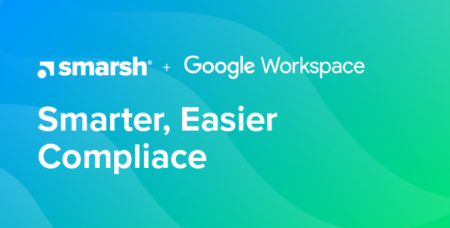The (Virtual) Reality of Hybrid Work in Financial Services
Reflections on Zoomtopia 2021
Not only was Zoomtopia 2021 a celebration of Zoom’s tenth anniversary, but the event also served as the first virtual conference the company hosted on its Zoom Events platform. This was just one of the many product innovations that are transforming Zoom from a video company to a collaboration company. And changing the way the world works.
While “Zoom fatigue” has emerged as a hybrid work buzzword over the past 20 months, Zoom made its two-day virtual conference engaging for all attendees. They had standout keynotes and entertainers, innovative product announcements, and industry breakout sessions for financial services, technology, healthcare, government and more.
Though the industries and job functions of Zoomtopia participants varied greatly — thanks to the widespread adoption of Zoom in the past year — the most pressing challenges and questions were common among attendees:
- What does the future of work look like?
- How do we leverage technology to minimize the risks introduced by hybrid work?
- How do organizations prepare for changing, differing collaboration preferences of employees, customers and other stakeholders?
How did Zoomtopia respond to these questions? Check out the top takeaways below.
The future of work is virtual
Zoomtopia began with a product and vision keynote that outlined many product enhancements and technologies that will soon be made available to organizations. From video voicemail to virtual reality (VR) whiteboarding capabilities with Oculus headsets, what seemed futuristic and near impossible a few short years ago will soon become the reality of collaboration.
Additional enhancements included:
- Expanded translation and transcription services to remove barriers to effective and dynamic communication
- “Huddle View” — a visual representation of a channel designed to give teams a sense of togetherness while they collaborate virtually
- “Next Slide, Please” — a setting similar to remote control where multiple meeting attendees can control slides, eliminating the need for a presenter’s verbal cue
VR headsets may not be widely adopted in financial services organizations any time soon. But there are other technological advancements coming from collaborative platforms that companies will need to adopt in order to make work more engaging and accessible for all employees. For regulated industries, as tools like Zoom continue to add capabilities, compliance teams need to be purposeful in how they approach the oversight of the records that emerge.
Financial firms are still trying to crack the compliance code
As industry-specific breakouts commenced, the topics of data security and compliance began to take center stage in financial services sessions. A poll of financial services organizations in one session asked, “What has or what would be your organization’s biggest challenge when deploying Zoom?” The answers varied:
- Capturing & archiving all communications (40%)
- Chat / whiteboarding / recording (24%)
- Mass deployment (13%)
- Centralized management (11%)
- Trader voice calls (8%)
- Managing the e-discovery process (5%)
With evolving means of communication and equally evolving regulations, it’s no wonder financial services organizations continue to struggle with compliantly capturing and archiving all their data. But regulators are expecting them to adapt. Financial services organizations must brace themselves for regulatory developments to address new and evolving cyber threats, communication preferences for digitally native workers, and technology advancements such as the continued development of new data sources.
Fortunately, there are intelligent technology solutions that help organizations future-proof their compliance and supervisory processes and stay ready for changes in the compliance landscape.
Collaboration technology and data can be strategic
Planning for the future of work starts by understanding that there is no single answer to how employees, customers and other stakeholders will want to engage and collaborate in business. While some are finding increased productivity due to remote work conditions, others are struggling to find balance without a traditional office setting.
When asked about the challenges that organizations must overcome to help all employees be successful in any working condition, Zeus Kerravala, Founder and Principal Analyst of ZK Research had three great tips:
Use the right tool for the right job
While the Zoom meeting platform has sustained us for the past 20 months, Zoom has evolved its offerings to include webinars, events, polling and other tools to support the different use cases of hybrid work. Picking the right tool for the right use case is key to engaging employees from anywhere.
Coach employees to use data to improve management processes
Zoom and other collaboration tools generate a wealth of data that managers can use to understand and improve employee performance and morale. Not only do these tools offer productivity insights, but they can also provide data into what activities employees are doing, if they are attending and engaged in meetings, or if burnout is on the horizon. Organizations need to coach managers to use the data at their disposal as hybrid work persists.
Workflows need to be more streamlined
As many new tools have been adopted in the past year and a half, employees have become the integration point for a plethora of tools. Employees are spending an increasing amount of time managing work across a variety of new tools and platforms, which takes them away from their primary focus. Taking advantage of APIs to integrate your tech stack and simplify workflows for employees is another powerful way to make hybrid workers more successful.
In an analyst session about the future of hybrid work, it was pointed out how far we have come from only one year ago. At last year’s Zoomtopia, the focus was predominantly on remote work, with the belief that there would inevitably be a return to office life as we knew it. Now, just one year later, remote work has evolved to hybrid work.
While there is no certainty about what the future holds, all analysts in the session agreed that hybrid is here to stay. They agreed that the organizations that will be successful in this era have — or are in the process of creating — a strategic and flexible plan on how to manage this reality. And that it must include technology solutions that can support and empower constant transformation.
Share this post!
Smarsh Blog
Our internal subject matter experts and our network of external industry experts are featured with insights into the technology and industry trends that affect your electronic communications compliance initiatives. Sign up to benefit from their deep understanding, tips and best practices regarding how your company can manage compliance risk while unlocking the business value of your communications data.





Subscribe to the Smarsh Blog Digest
Subscribe to receive a monthly digest of articles exploring regulatory updates, news, trends and best practices in electronic communications capture and archiving.
Smarsh handles information you submit to Smarsh in accordance with its Privacy Policy. By clicking "submit", you consent to Smarsh processing your information and storing it in accordance with the Privacy Policy and agree to receive communications from Smarsh and its third-party partners regarding products and services that may be of interest to you. You may withdraw your consent at any time by emailing privacy@smarsh.com.
FOLLOW US